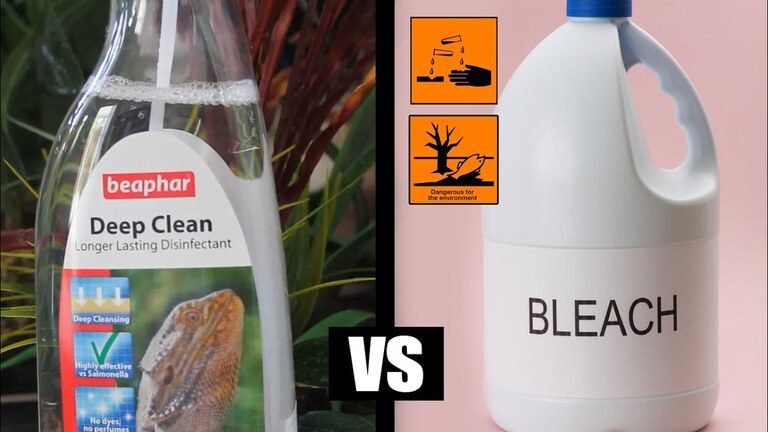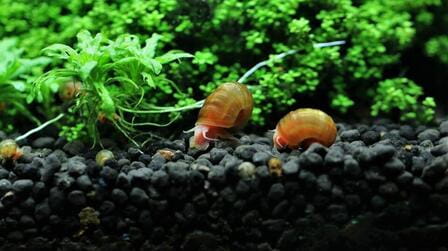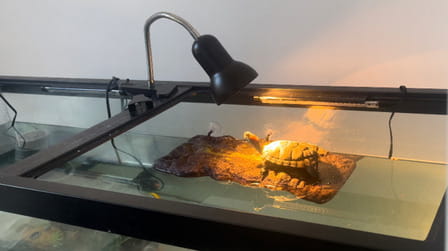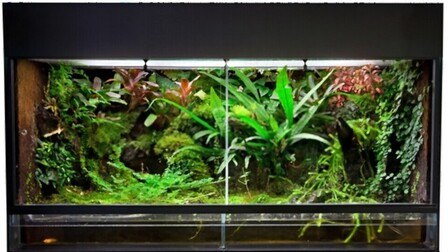To ensure that reptiles or amphibians use the habitat the same way we use our homes. They are normal and grow well in their surroundings. The big difference is that we can quickly and easily remove food and bathroom waste from the house with just one flush or by taking the trash out.
Besides, it's important to keep waste picked up, but even getting rid of it can leave harmful bacteria behind. To help reduce the possibility of bad bacteria causing disease, it is important to clean and disinfect the habitat. Not every cleaning product for the home is safe for pets, how to clean a reptile cage, let's find out below.
Say no to waste
The best way to keep your pet's habitat clean and free of litter is to remove it, not just feces, when you see it. Each time your pet goes to the bathroom, leaves food behind, or finds a dead creature, remove it and dispose of it as soon as possible. In a humid environment many types of bacteria and bad fungi. The longer it is left in the terrarium, the higher the chances of a pet crawling through and being exposed to those pathogens. To remove it, you can use your hands and make sure to remove all litter and litter around and under it. However, you need to do it daily and make sure to wash your hands immediately and not touch anything after removing the waste. When removed, replace it with a handful of clean bedding. If waste gets on the decorations, remove the ornaments and rinse with hot water, then replace.
Deep cleaning

The cleaning of the waste is also not enough. Some types of waste cause odors, if cleaned deeply, it will help the pet's living environment to be odor-free and reduce the possibility of harmful pathogens, but it is still small pieces of waste. Many species of burrowing animals can leave waste in the substrate that you may not be able to see. To prevent waste from accumulating, the enclosure must be demolished and cleaned every two to three months. Also, clean the case with clean hot water, and use a cleaning product to stick with dish soap and elbow grease.
We will walk you through the steps of how to deep clean:
- Remove pets and place them in a safe container. Add warm water to the container to soak them while you're cleaning.
- Move the terrarium near the sink, it will make cleaning easier, but be careful and don't lift it alone. If it is not possible to move it, get a trash can and a storage bin and bring them close to the surrounding area.
- You should turn off the lights and let it cool down before removing them to enter the terrarium. Even if you don't need to move them, turn them off to avoid splashing water or debris from breaking the bulb.
Remove all decoration things and sweep any stuck substrate back into the terrarium, then place it in the storage bin. Once all the decorations are in the bin, they can be taken to the sink for cleaning. Clean them with hot water and dish soap then disinfect with a 10% bleach solution, rinse and let dry.
If the terrace location, remove and discard all litter, then sweep away any remaining substrate. With a bucket of warm water and dish soap, scrub all interior surfaces of the case. Rinse with clean water and let dry.
- You can also use a cleaning solution to do this step with warm clean water and do nothing else.
- When it done, move the empty terrarium back to its place. Now is the time to regroup the habitat. To start, add the new substrate to a depth of about 2". Further, add deeper areas to create hills and other slopes. Turn the lights back on and let warm up for 20 minutes. Check the background, warm, and cool side temperatures to make sure they're correct and adjust the decor as needed.Once the temperature is stable and within the required range, let your pet get used to the clean new home.
Cleaning with cage accessories

Make sure that any natural objects, such as rocks and twigs, that you introduce into the environment are sterile. Ice must be cleaned, then boiled in water for 30 minutes. Sand can be washed with large amounts of water to remove any small debris, then heated in an oven at 200-250 F for 30 minutes. The branches also need to be cleaned, then heated in the oven at 200-250 F for 30 minutes.
Cleaning tool

It is recommended to assemble a quick cleaning kit to clean the cage. Store these items separately from the other household cleaning supplies. To prevent cross-contamination, never use sinks or tubs that are used for bathing people or preparing food.
Some tools like:
- Spare Cages - clean in minutes, hours or even days the swarm has to be relocated.
- Brush - small and medium size depending on the cage. Toothbrushes are great for corners and crevices in decorations.
- Shove
- Herp-safe terrarium cleaners dissolve hard matter on the surface.
- Tissue
- Q-tip, toothpick, scraper and razor blade - to reach the tiniest gaps and remove hard material.
- Rubber gloves and goggles
- Sand filter - removes manure and other debris from sand and other fine granular substrates.
- Soap or dishwashing liquid - products containing phenol or pine scent.
- Sponges - 1 set for cleaning, one set for washing and one set for disinfection.
Cleaning schedule
The time and frequency of regular cage cleaning depends on the size and habits of the pet herd. Based on its species-specific needs and preferences. As some cages of large iguanas require more work than cages of snakes.
Daily cleaning to remove food spills, uneaten food, loose skin, cysts or feces; Also cleans and disinfects dishes and drinking water.
Clean and disinfect cages, substrates and decorations weekly.
During cleaning, it is recommended to use rubber or rubber gloves and goggles. After each contact with herpes, and every hygiene procedure - wash your hands thoroughly; You may also want to use hand sanitizer.
1 Daily cleaning
When you're cleaning, it's important to look for any signs that she might be sick. Also, look out for hazardous conditions in the cage and remove or repair them.
Observe:
- Normal amount of food
- Temperature of cage
- Stools and urine are normal in shape and quantity
- Is hair loss or is it normal?
Ticks appear as small brown, red, or black spots around the reptile's eyes, between their scales, or on the animal's skin.
Ticks are slightly larger, brown, black or gray in color.
Invasion of parasites inside the body is often signaled by emaciation or changes in the stool.
You can use more desiccant sand to prevent odors from pets.
If it is necessary to clean the inside of the cage with a cleaning solution, move the flock to another clean cage until the cage is dry and smoke-free.
Food and drink dishes should be washed with hot, soapy water and dried thoroughly. To provide extra cleaning power, use a disinfectant. Always rinse to make sure there are no traces of soap or disinfectant left on the dishes. A good alternative is to have two or more sets of dishes, so while one is being cleaned, the other can be used in the cage.
2 Disinfectants
Choosing the right disinfectant for the barn must be done carefully. They must be strong enough to kill pathogenic viruses, bacteria, and fungi but not harm the flock.
Household bleach works best and only uses about 1 part bleach to 32 parts water (1/2 cup bleach to 1 gallon water).
Also, remove food, feces, soap, etc., using any disinfectant.
Apply disinfectant liberally to the cage and accessories. Let the disinfectant come into contact with the material for 10 minutes; If an item is porous, it may take longer. However, it is also important to thoroughly wash items, especially any wooden items, with clean water to remove all the disinfectant.
3 Weekly cleaning
That is, once a week, or as often as necessary, release into a clean cage, then follow these steps in turn:
- Remove all decorations in the cage.
- Clean, wash, and disinfect water bowls and food bowls.
- Pocket and discard disposable substrate.
- Clean cage surfaces with soap and hot water, and rinse well.
- Loosen tough stains with a commercial terrarium-safe cleaner, toothbrush, or putty knife.
- Clean both decorations and non-disposable substrates, like indoor/outdoor rugs, with hot soapy water. Scrub with a brush to remove waste and dry liquid. Wash.
- After washing and rinsing accessories and the cage, use a disinfectant. Be sure to wash the cage and accessories with hot water until all dirt is removed.
- Allow the cage and accessories to dry thoroughly before reassembly to reduce the possibility of mold.
- Replace any decorations, especially wood, they will not dry easily.
- Be sure to thoroughly clean and disinfect all equipment, sponges, buckets, gloves, and sinks.
- Wash hands with hot soapy water.
Conclusion
Generally, all reptiles require special care to maintain cleanliness. You need to plan a schedule for cleaning cage cage maintenance because it is necessary to keep it a safe and healthy home for the herp, and an enjoyable, odor-free, and attractive showplace.
Furthermore, the reptiles are susceptible to skin and bacterial infections, cages and housing must be kept scrupulously clean. Thanks to that, you can cause disease in humans, your reptile's cage, furnishings, and the cleaning equipment itself needs to be regularly cleaned and disinfected. So we hope that you know more step by step how to clean a reptile cage.









